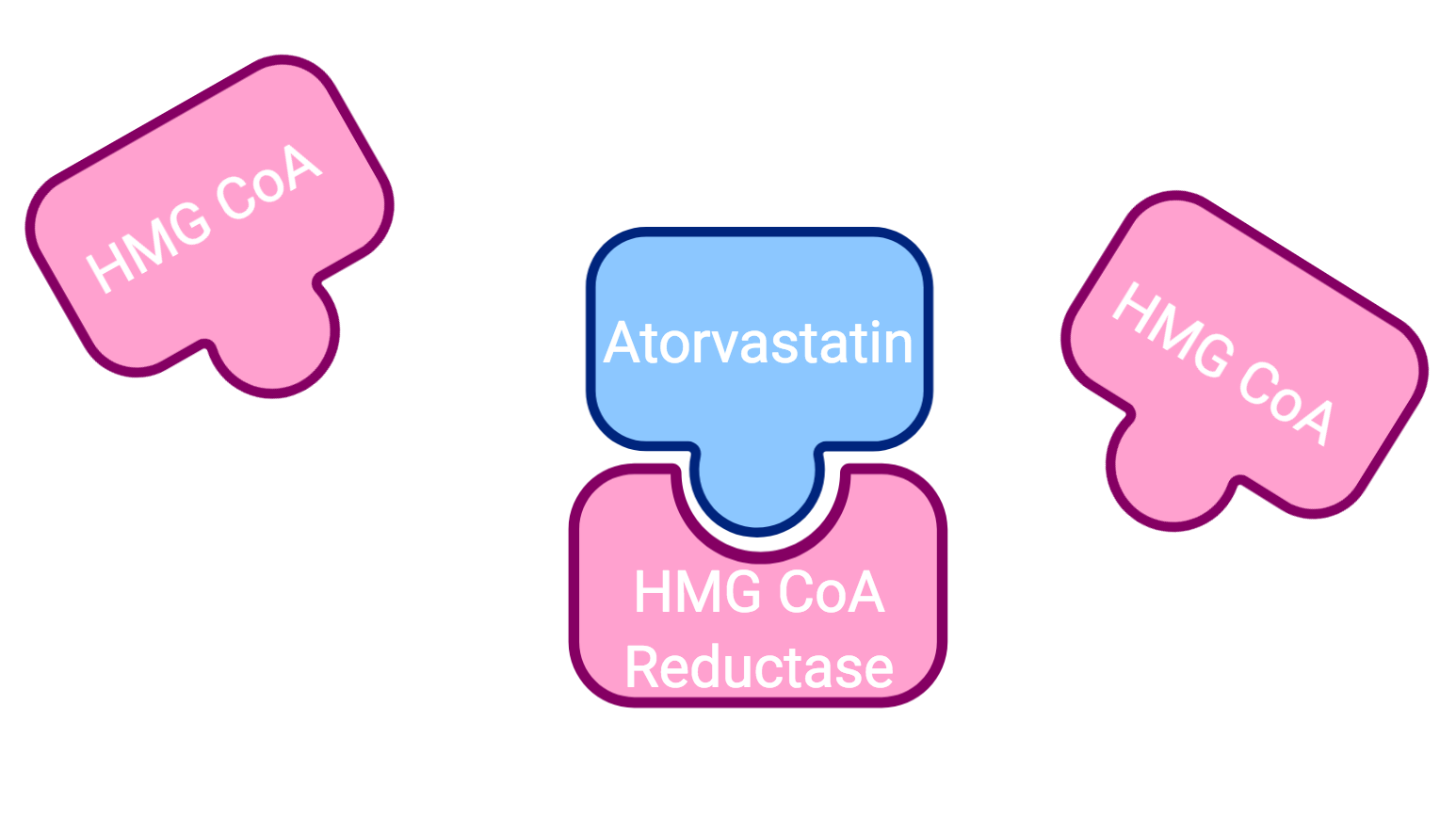49 6.2 Mechanism of Atorvastatin on Cholesterol Biosynthesis
Learning Objectives
In this section, you will learn:
- Why statin drugs are being used to treat CKD patients.
- How atorvastatin reduces cholesterol synthesis in the liver.
Why Use Statins for CKD?

Statins are HMG CoA reductase inhibitors that are commonly used to treat patients with CKD ( Palmer et al., 2014).
Dyslipidemia is considered a medical complication of chronic kidney disease and associated with cardiovascular disease. Studies have suggested that a statin therapy can be used to treat dyslipidemia; however, the effects of statin treatments on CKD patients are still unclear. For this reason, statin therapy is being studied, and scientists are questioning whether the use of statins can help slow down the development of CKD. A study conducted by Cho et al from the the Gachon University of Gil Medical Center in South Korea wanted to assess the effects of different statin drugs such as rosuvastatin, simvastatin, and pitavastatin on patients with different stages of CKD. They performed a retrospective study consisting of 14,497 patients diagnosed with CKD compared one group of CKD patients with the statin treatments and the other one with CKD patients prescribed with non-statin drugs. The results suggested that the administration of statins like simvastatin and rosuvastatin reduced the levels of LDL and cholesterol in patients with chronic kidney disease compared to the cohort with non-statin treatment (Cho et al., 2014). Their finding proposes that the use of statin drugs can slow the progression of CKD and exert improvements on renal functioning (Cho et al., 2014).
Mechanism of Atorvastatin
Atorvastatin is a statin drug that aims to reduce lipid levels in the blood. To understand how this drug works, we need to first understand the pathway of cholesterol biosynthesis.
Cholesterol biosynthesis occurs in the cytoplasm of hepatocytes, where the enzyme, HMG-CoA reductase, binds to HMG-CoA and catalyzes the production of mevalonate, initiating the synthesis of cholesterol in the liver (Zodda et al. 2018).

Statin drugs such as atorvastatin inhibit cholesterol synthesis by working as an antagonist to HMB-CoA reductase. Statins have a similar structure to HMB-CoA reductase, allowing for them to bind to the active site of HMG-CoA reductase and block HMG-CoA from binding; this reduces cholesterol synthesis in the hepatocyte (Zodda et al. 2018).

Without cholesterol biosynthesis, the liver begins to search for other methods to acquire cholesterol; one method includes taking-up LDL from the blood. To do this, hepatocytes increase their expression of LDL receptors on their surface, allowing for the receptors to bind LDLs and break them down to obtain cholesterol (Zodda et al. 2018). It is through this mechanism that atorvastatin indirectly reduces plasma LDL levels and cholesterol.
In the next chapters, we will explore a randomized trial conducted by Kimura et al that assesses the use of a statin drug, atorvastatin, to treat patients with CKD-related dyslipidemia. The effects and potential benefits of the drug on renal function will also be examined.
